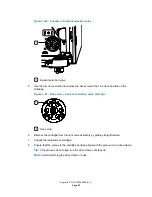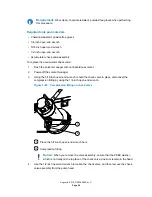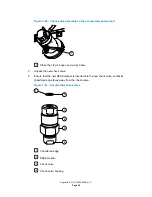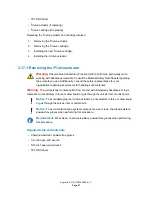
1/2-inch Hex nut
5/16-inch open-end wrench flat
7.
Insert the check-valve assembly into the head, tighten the check-valve nut with your fingers
to the extent possible, and then use the 1/2-inch wrench to tighten the nut an additional
1/8-turn.
8.
Using the 5/16-inch open-end wrench to hold the check valve in place, reattach the
compression fitting to the check valve.
9.
Tighten the compression fitting with your fingers to the extent possible, and then use the
1/4-inch wrench to tighten the fitting as much as an additional 1/6-turn, for an existing
fitting, or as much as 3/4-turn, for a new fitting.
10. Power-on the solvent manager.
11. Prime the solvent manager (see
3.17 Replacing the i
2
Valve actuator and cartridge
Warning:
Observe Good Laboratory Practice (GLP) at all times, particularly when
working with hazardous materials. Consult the Material Safety Data Sheets regarding
the solvents you use. Additionally, consult the safety representative for your
organization regarding its protocols for handling such materials.
Warning:
To avoid personal contamination from contact with biologically hazardous or toxic
materials, do not attempt to force or draw liquid or gas through the valve's inlet or outlet ports.
Notice:
To avoid damaging the
i
2
Valve
actuator, do not attempt to force or draw liquid
or gas through the valve’s inlet or outlet ports.
Notice:
To avoid contaminating system components, wear clean, chemical-resistant,
powder-free gloves when performing this procedure.
Requirement:
Wear clean, chemical-resistant, powder-free gloves when performing
this procedure.
You can replace just the
i
2
Valve
actuator or cartridge.
Recommendation:
Waters recommends replacing the
i
2
Valve
cartridge whenever you replace
the actuator.
Required tools and materials
• Chemical-resistant, powder-free gloves
• 1/4-inch open-end wrench
• 5/16-inch open-end wrench
August 8, 2016, 715005050 Rev. C
Page 66
















































